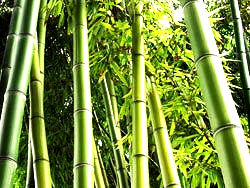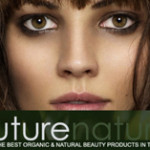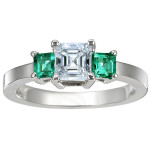 The bamboo species for textile production is Phyllostachys heterocycla pubescens, commonly known as Moso bamboo. It is primarily grown in China where there are the most textile mills. Moso bamboo is the largest of the temperate zone bamboo species, is grown on family-owned farms, provides edible shoots, but is not what beloved panda bears eat. All sounds good until the manufacturing process is investigated.
The bamboo species for textile production is Phyllostachys heterocycla pubescens, commonly known as Moso bamboo. It is primarily grown in China where there are the most textile mills. Moso bamboo is the largest of the temperate zone bamboo species, is grown on family-owned farms, provides edible shoots, but is not what beloved panda bears eat. All sounds good until the manufacturing process is investigated.
Common production from plant to fabric is not as green as eco-minded people would like. Michael Lackman of LotusOrganics.com contributes to an impressive blog his family originated. He shares some interesting facts from extensive research.
Scrutiny is gaining attention because heavy and toxic chemicals are typically utilized to process bamboo into fabric. The alternative to chemical is mechanical processing. The mechanical method means crushing the woody parts of the bamboo plant followed by natural enzymes to break the walls into a mushy mass so that the natural fibers can be combed out and spun into yarn. This is essentially the same eco-friendly manufacturing method used to develop flax or hemp linen.
Chemical processing results are a regenerated cellulose fiber similar to rayon or modal. In fact manufacturing is sometimes referred as “bamboo rayon” because of the equivalent chemical processing to rayons and the similar nice feel to humans.
In reality, bamboo fashions are mostly produced by concocting the bamboo leaves and woody shoots in strong chemical solvents such as sodium hydroxide (NaOH which is also known as caustic soda or lye), and carbon disulfide in a hydrolysis alkalization chemical mechanism combined with multi phase bleaching. Both sodium hydroxide and carbon disulfide are linked to serious health problems. Because of the health risks and damage to the environment, the chemical method is not considered sustainable.
Bamboo garments are praised for design characteristics similar to lyocell. The lyocell process is used to manufacture the Tencel® brand which is considered eco-friendly because their formulations used are supposedly nontoxic to humans. Lyocell processes are closed-loop so that 99.5% of the chemicals are captured and recycled to be used again. In comparison to chemical bamboo fiber production, it’s greener.
A new technology worthy of mention is from Greenyarn™ where they make fabric made from nano particles of bamboo charcoal. They deny use of harmful chemicals, but the actual process is vague. Stay tuned.
Conscious fabric retailers need to look for certification from an independent and reliable certification company. Currently, Oeko-Tex is the most comprehensive label for insuring that the garment is healthy for consumers. Other certification bodies are Soil Association, SKAL, or KRAV. Bamboo fabric buyers are wise to ask specific questions about textile development in addition to a label demand.
Conscious fashion retailers should inquire about the bamboo garments or home interior products they purchase for their shops. The investigation trail goes back to the mills and if the fashion production company refuses to share a copy of the label or certification, watch out for that red flag!
 Consumers need to ask the retailer for verification if there’s not a label on the item they want to purchase. After all, the more who ask increase the demand and when demand increases, so does supply.
Consumers need to ask the retailer for verification if there’s not a label on the item they want to purchase. After all, the more who ask increase the demand and when demand increases, so does supply.
As fashion fads go, green admiration trends shift from one of mother nature’s gift to another. Bamboo is IT these days, but ecology issues will surface, and green consumers will educate themselves, — if the manufacturing process doesn’t prove satisfactory.
Don’t fall for the gold rush when scrutiny is required to honestly connect it to the green market. Whether for adoring or wearing, the bottom line is to investigate and educate before making a bamboo investment.


9 Comments